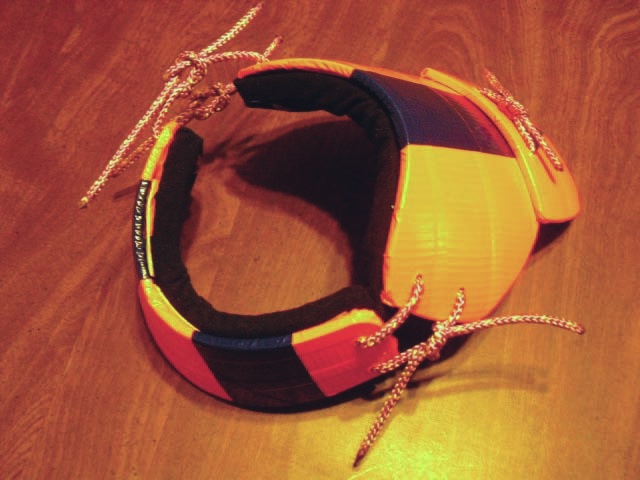This guide to building an gorget to protect the front and back of the neck using pieces cut from a plastic barrel was written in March 2011 by Jaekel and Shamus of the East Kingdom’s Barony of Bhakail.
It is also available in PDF format (15 pages) and a shorter PDF version (5 pages) with a separate cutting template (2 pages).
In this guide we will be making a gorget from barrel plastic for use in SCA Youth Combat as per East Kingdom standards. This method is useful in creating resizable neck protection that can be adjusted for several years worth of use.
What you will need
Materials (pictured below):
a) Barrel plastic
b) Foam padding (excercise mat)
c) Template patterns
d) Duck tape
e) Scissors
f) Cord
g) Marker or Pen
h) Cotton fabric (old t-shirt, optional)
Additional Tools:
i) Saw
j) Drill
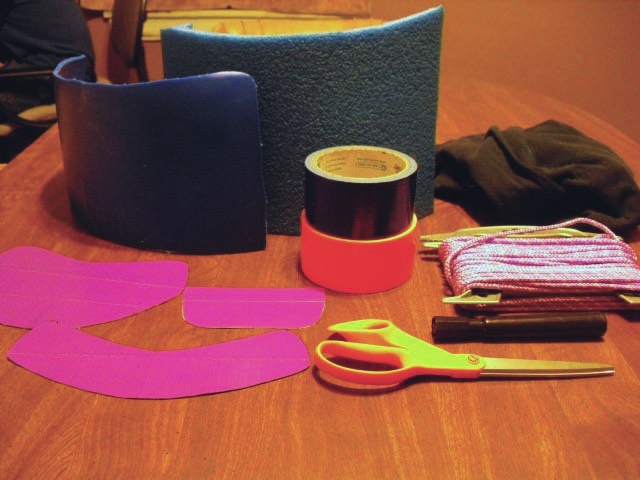
Plastic armor plate templates
We will begin construction of our gorget by using templates to mark the barrel plastic for cutting as shown below.
I have included a set of templates for you to use that are the same size of those shown in the pictures of this guide. Note that you can cut apart the template pieces along the dotted lines as a way of making the armor plates larger or smaller as you desire.
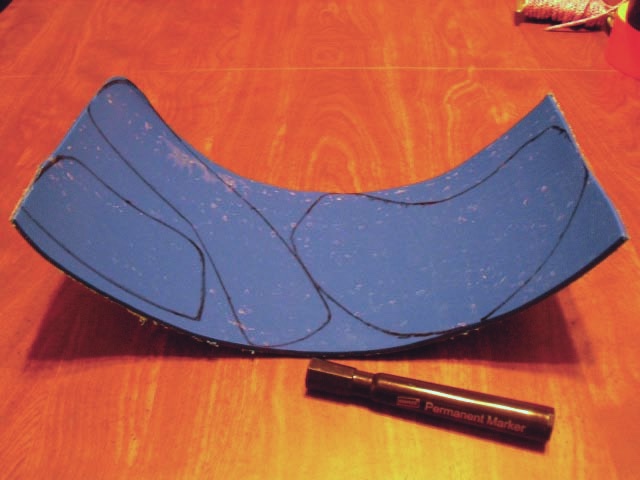
Cut and smooth the plastic armor plates
Using whatever method of choice/availability at your disposal, cut out the pieces of gorget armor plating and smooth the sharp edges by either filing and/or sanding them.
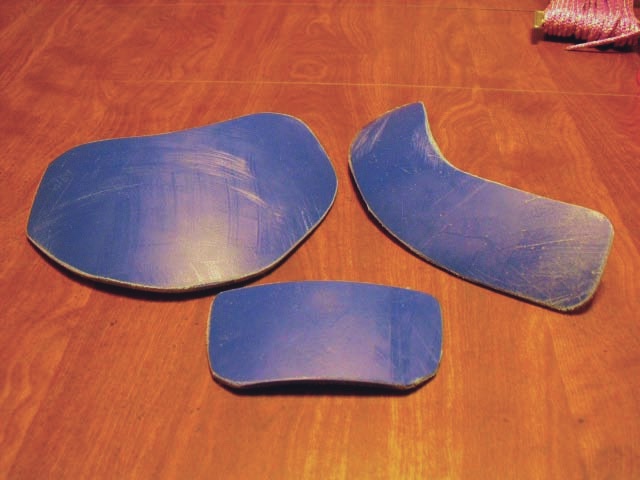
Bend and shape the plastic armor plates
You now need to heat and shape the plastic armor plates into tighter curves that will fit around the neck more naturally. There are 3 popular methods for accomplishing this that I have come across:
- Use a heat gun and gloves to shape the plastic.
- On a cookie sheet covered with aluminum foil, place the plastic gorget
plates in an oven at 250 degrees for 5 to 10 minutes. Bend the plastic into shape and hold in place using gloves for a minute (or, as I like to do, use duck tape!). - On a cookie sheet covered with aluminum foil, place the plastic gorget plates in an oven at 300 degrees for 5 minutes. Bend the plastic into shape
and hold in place using gloves while quenching the plastic in a sink of cool water.
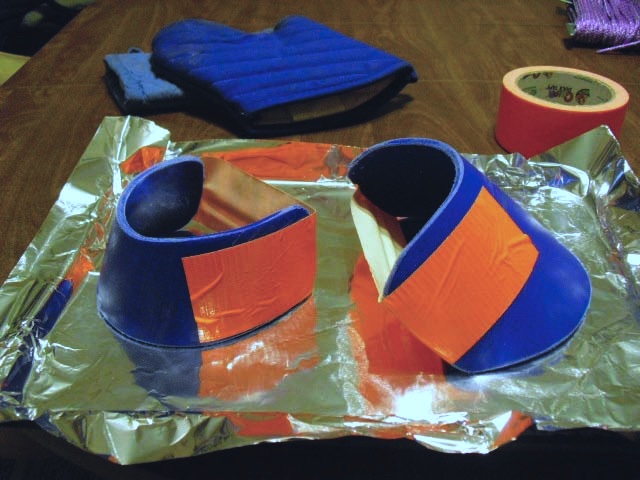
Drill holes
Now that our plastic gorget armor plates are in the desired shape, it’s time to drill the holes for the cording. This is a lot less problematic to do now rather than after the plates are covered in duck tape.
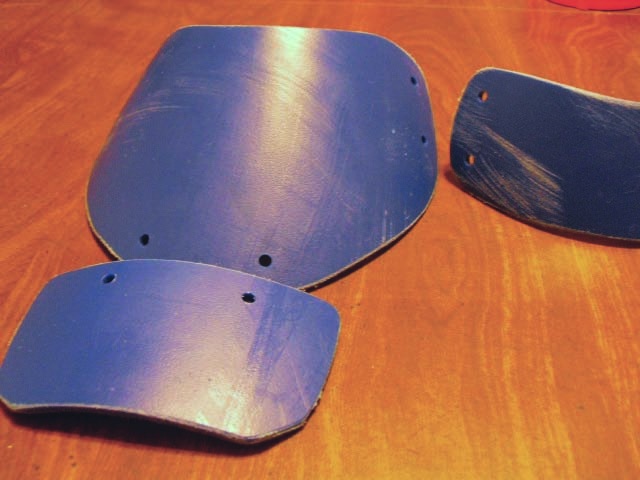
Foam padding templates
Use your gorget armor plates as templates to trace outlines on your foam padding. I prefer to use cheap foam exercise mats for padding as shown pictured below.
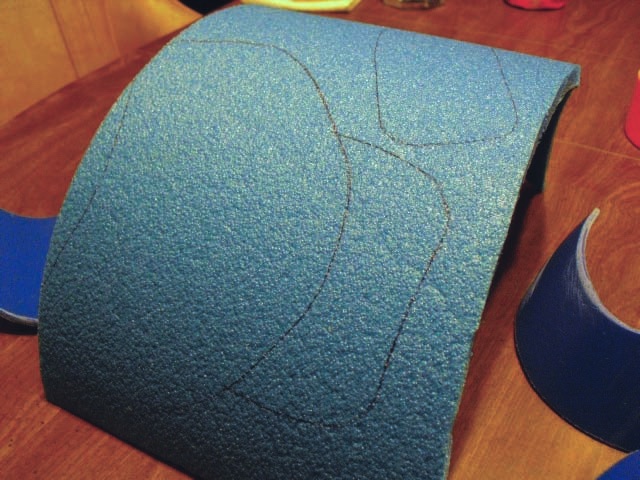
Cut the foam padding
Carefully cut the foam padding to fit well underneath the plastic armor plates. As you can see from the image below, I like to use a combined piece of padding to go underneath armor plates 2 and 3 (the plates covering the back of the neck).
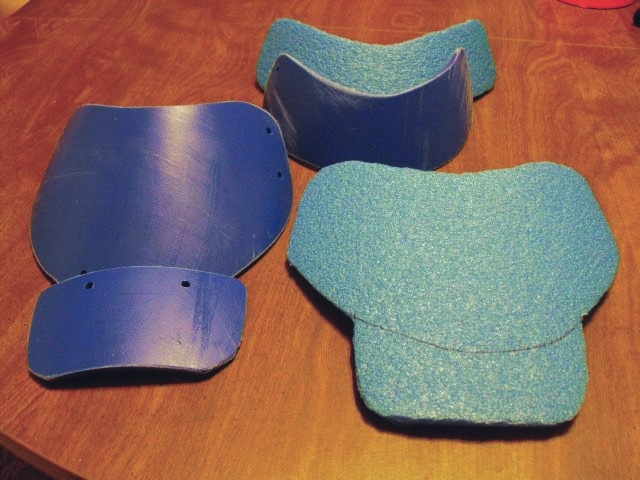
Duck tape the plastic armor plates
Use duck tape to completely cover the plastic gorget armor plates as shown. A nail or similar tool can then be used to poke through the duck tape over the holes we drilled earlier.
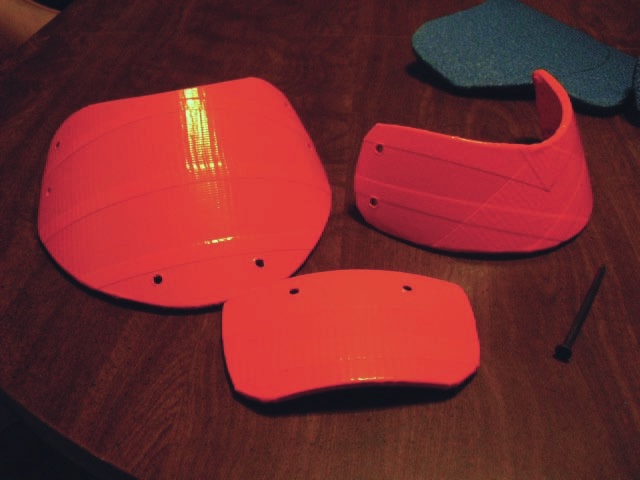
Wrap the foam padding with fabric (optional)
Using cotton cloth of some sort (I use old chopped up t-shirts), completely cover the foam padding. Doing this step will greatly aid the comfort level of the youth fighter who wears this gorget.
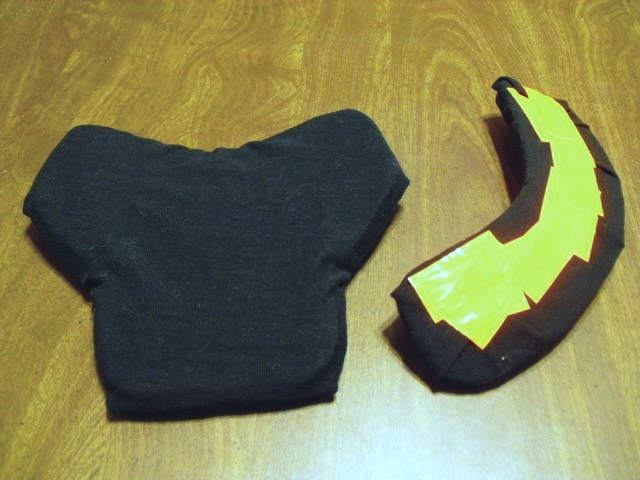
Align and connect
With the help of some rolled up duck tape loops, align and fix into position the foam padding inside the duck tape covered armor plates.
You will then need to use the nail (or whatever your tool of preference) to poke holes through the padding foam (and cloth if you used it) so that you can get the cording through shortly.
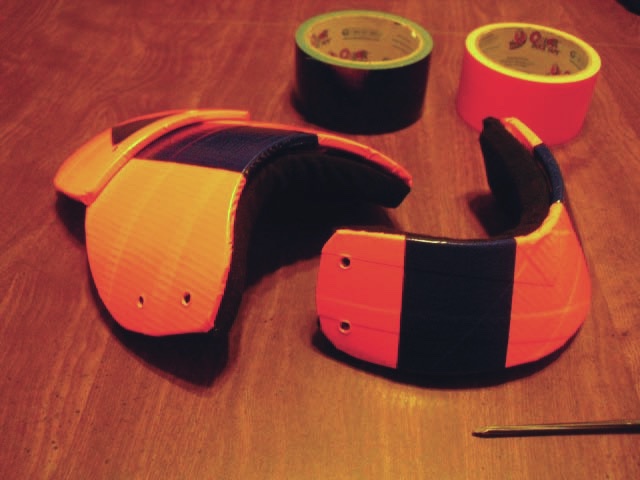
Lace with cord
Using a good sturdy cord (I prefer poly cord since it is strong, will not rot or mildew, and leather seems to snap all to easily after a few uses), thread the pieces of the gorget together as shown. A trick I like to use is to poke long needle nose pliers through the holes in the foam padding so that I can grip the end of the cord for pulling it through.
You will, of course, need to make sure that the gorget can relatively easily be opened and closed on one side. This gorget uses two square knots on the right side for access.
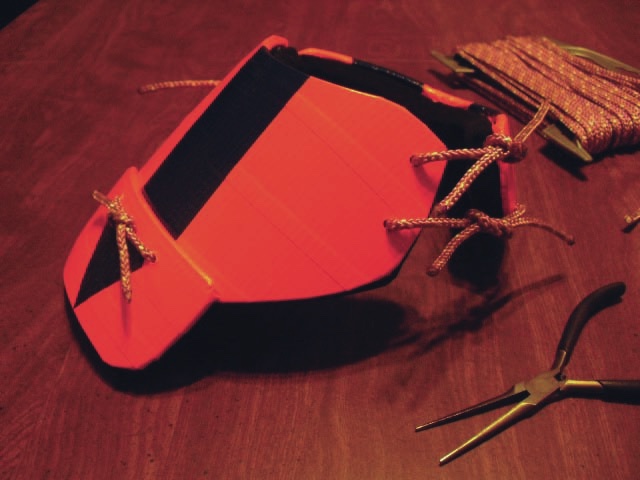
A completed gorget
You should now have an excellent heavy duty piece of neck armor that is comfortable to wear and easy to get in and out of. Also, by adding a small tab of barrel plastic to each side, this gorget can be expanded in size if necessary and continue to be used for many years.
This gorget fulfills the SCA East Kingdom safety requirement for neck protection that covers the Larynx and lower Cervical Vertebrae.
